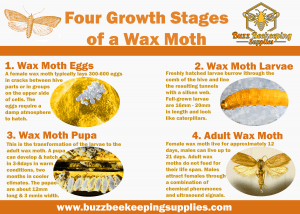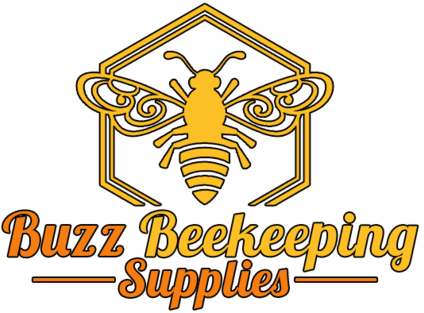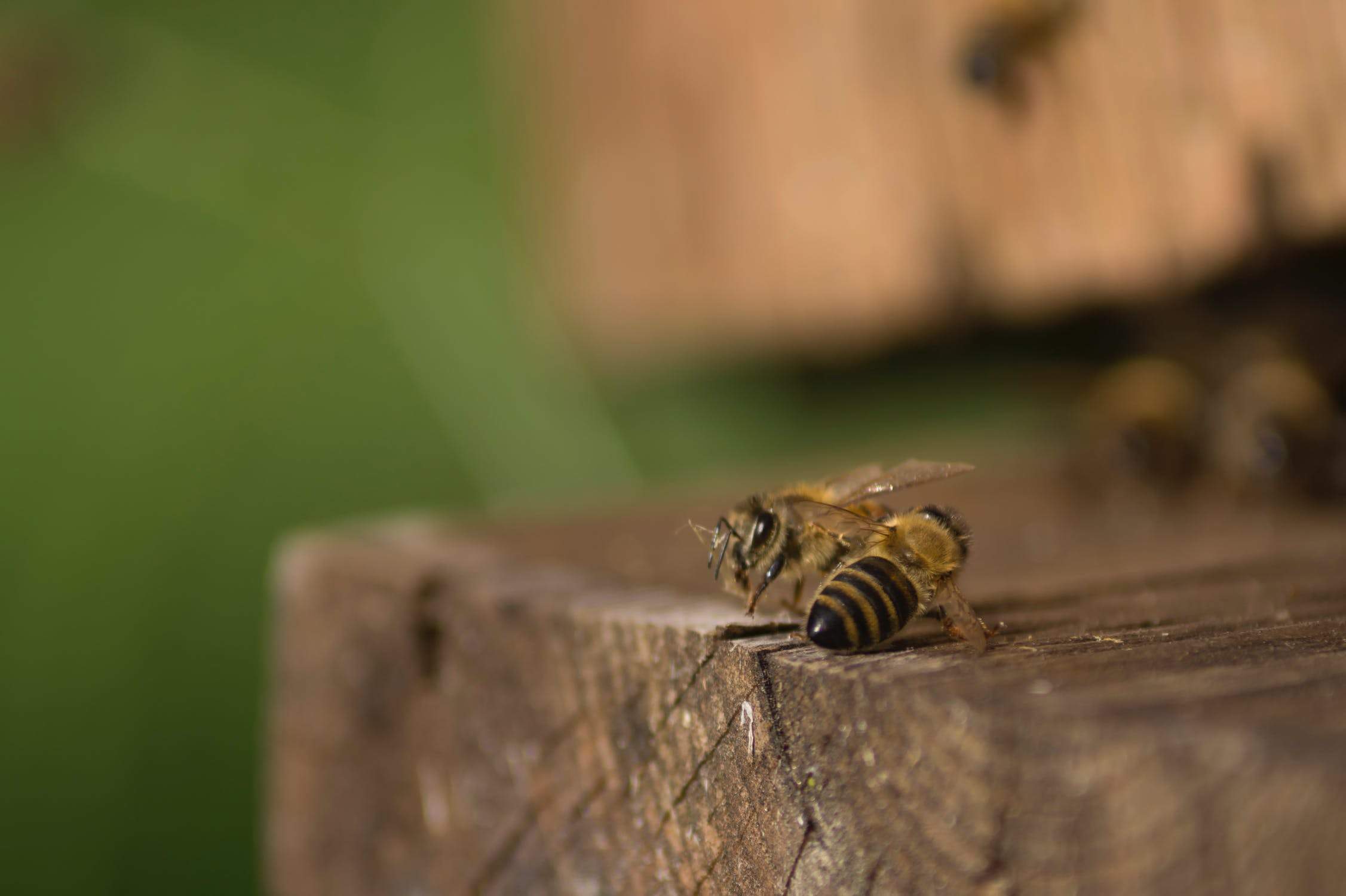Wax Moths

Wax Moths: How to Keep Them Out Of Your Beehives
Wax moths can cause a lot of damage but it does not have to pose a challenge if you know how to deal with them, and either control or prevent an attack.
What types of wax moths attack beehives?
Wax moths exist in two species; the Greater wax moth, whose botanical name is Galleria mellonella, and the Lesser wax moth, also known as Achroia grisella.
Though they are active hives’ pests, there are opportunistic and therefore take advantage of poorly maintained hives that are either diseased or those with declining colonies.
An infestation is an indication of an underlying problem with the colony. They prefer eating unprocessed beeswax; larval honeybees’ remains, pollen, honey bee, and cocoon silk.
Characteristics and life cycle of wax moths
The greater wax moth measures 1.5 inches long, while the lesser wax moth 0.5 inches in length. The greater wax moth is mottled grey, but the Lesser wax moth is whitish silver.
Both species prefer to mate at night and lay eggs. The eggs hatch into larvae, which feed on hive debris and wax, and as they feed on discarded cocoons, they leave a sticky white web challenging to pull apart.
The larvae become cocoons after approximately 19 days, if in warm weather after which the pupae become adult moths after 14 days.
Can you tell if your hive has a wax moth infestation?
The most defining feature of a wax moth infested hive is the sticky web that is almost impossible to tear down.
The moths leave behind this web until they consume all the wax. Moreover, you can see some larvae crawling around the comb’s surface and faces, which are small black cylinders, on the surface of the bottom board.
To what extent do Wax moths damage a hive?
Wax moths attack hives with weak colonies and cause large-scale damage. They hinder the colony’s ability to store food and raise their brood by destroying the honeycomb. Within a couple of weeks, a hive can be completely devastated and lost.
In a healthy colony, they barely do any harm because bees patrol the hives regularly and remove wax that has wax moth larvae in it thus protecting the hive.
If you notice wax moths, you should know the underlying problem starting with any hindrances to an increase in bee population.
Keeping wax moths away from stored honeycombs
Honeycomb is a valuable resource because honeybees can refill a drawn comb and eliminate the need to build from scratch, which implies that you as the beekeeper and the colony enjoy a larger honey harvest.
It would, therefore, be a shame to improperly store the honeycombs after all the time bees have put in their construction and the money you have invested in your hives.
You can use these two methods to protect your honeycombs from wax moths:
Freezing frames- wax moth larvae will not survive in freezing temperatures; therefore, you should put your frames in a plastic bag. Place the bag in a freezer for two days after which you store them in an airtight storage container.
Ventilation and Light – wax moths love tiny dark places with minimal air circulation. You should, therefore, store your frames in a well-lit area with plenty of ventilation to create an environment unsuitable for the wax moths.
If you have an infestation, placing the frames in direct sunlight will force the larvae to exit the honeycomb.
If you prefer storing your frames in supers, ensure they you place them in an area with sufficient light and lots of space between supers to allow for maximum air circulation when not in use.
Make your wax moth trap
Prevention is always better than cure, they say. You should, therefore, make it your goal to keep moths away from your hive and avoid dealing with an infestation later, by trapping them before they can get to your hive.
What you need:
- 2-litre plastic bottle
- 1 cup of hot water
- 1 cup sugar
- ½ cup vinegar
- One banana peel
- Drill
Method
Using the drill, make a 1-inch hole on the bottle’s neck, below the slope. Pour the hot water into the bottle; add the sugar and the vinegar.
Mix thoroughly and then add the banana peel to the bottle.
Cap it and wait for several days for it to ferment. Once it does, tie it to a tree close to the hives so that it draws the wax moths away from the gives.
They will enter the bottle through the hole and drown in the liquid thus preventing damage.
Conclusion
Wax moths can cause massive losses for you and your bees, but with the proper storage of honeycombs and maintenance of hives, you can prevent an infestation.
With the above tips to trap moths and store combs, your hives will be safe, and your colonies will remain large enough for you to enjoy a bumper harvest.
1. Ventilated Suit – https://amzn.to/2D1hJBu
(NEW) Ventilated Jacket – https://amzn.to/2Av6piJ
2. Beekeeper YKK Suit Combo – https://amzn.to/2Xk3xLz
3. Beekeeper Journal – https://bit.ly/3xXxFl2
4. YKK Suit – https://amzn.to/2IDJALO
5. Beekeeper Jacket – https://amzn.to/2FirwTW
6. Beekeeping Gloves:
– Goatskin Beekeeping Gloves – https://amzn.to/2GYxBZW
– Cow Leather Beekeeping Gloves – https://amzn.to/2uiSExd
7. Queen Marking Kit – https://amzn.to/2Wm1kCw
– Queen Marking Pens – https://amzn.to/3c4vE8y
–Queen Marking Cage – https://amzn.to/2TDwwdQ

